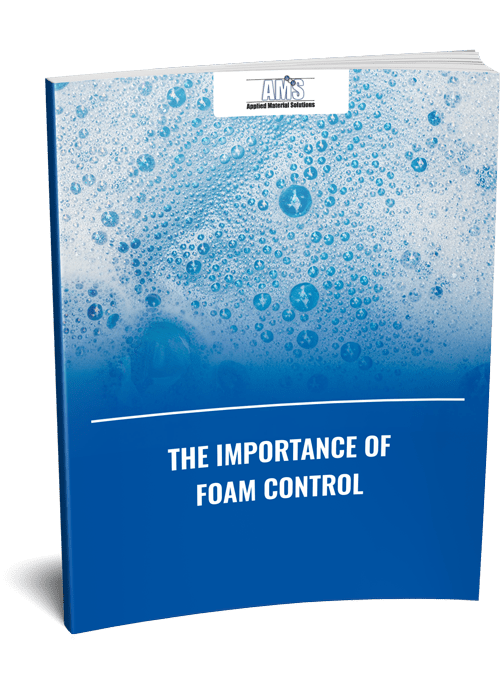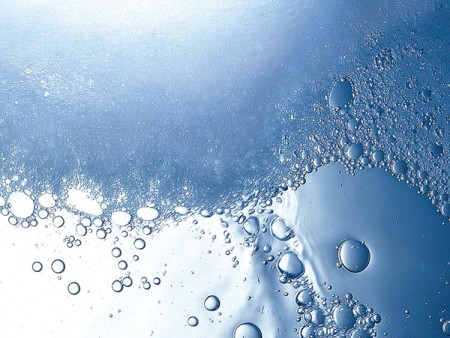Exploring Different Sorts Of Anti-Foam Control Solutions for Numerous Industries
The management of foam in industrial procedures is an important aspect that can affect both product top quality and functional effectiveness throughout different fields. Different sectors, such as food and beverage, pharmaceuticals, and wastewater therapy, face distinct obstacles related to foam development, necessitating customized anti-foam remedies.
Understanding Foam Formation
Foam formation is an intricate physical phenomenon that happens when gas is entraped within a liquid, developing a stable structure of bubbles. This procedure is affected by various aspects, consisting of the residential properties of the liquid, the nature of the gas, and external conditions such as temperature and stress (Anti-Foam Control Solutions). The security of foam is largely figured out by the surface area tension of the thickness and the liquid, as these homes determine how easily bubbles can develop and linger
In numerous industrial applications, foam is an undesirable byproduct that can prevent procedures, reduce efficiency, and impact product high quality. The formation of foam is typically worsened by frustration, blending, or chemical responses, leading to enhanced functional difficulties. Comprehending the systems behind foam development is critical for creating efficient control approaches.

Sorts Of Anti-Foam Brokers
Numerous kinds of anti-foam representatives are made use of throughout industries to fight the difficulties presented by foam formation. These representatives can be extensively classified right into 2 primary types: non-silicone-based and silicone-based anti-foam agents.
Silicone-based anti-foam agents are highly effective due to their distinct buildings. They are composed of polydimethylsiloxane (PDMS) and can dramatically reduce surface area stress, permitting quick foam collapse. Their security at high temperature levels and in numerous pH settings makes them ideal for varied applications, including manufacturing and chemical processing.
On the various other hand, non-silicone-based anti-foam representatives consist of organic compounds such as fatty acids, esters, and waxes. These representatives commonly act as eco-friendly alternatives to silicone-based items. They commonly function by providing a physical barrier that interferes with foam development. Non-silicone representatives are typically employed in applications where silicone contamination is a concern, such as in specific pharmaceutical processes.
Moreover, some anti-foam agents combine both silicone and non-silicone components to improve efficiency throughout certain problems. Understanding the unique attributes and applications of these anti-foam representatives is critical for selecting the right solution for foam control obstacles in various industrial setups.
Applications in Food and Drink
In the food and drink sector, efficient foam control is paramount to making sure product high quality and process efficiency. Excessive foam can lead to functional challenges, such as devices overflows, decreased processing ability, and incongruities in item structure. Numerous applications within this field, consisting of developing, dairy processing, and juice manufacturing, need customized anti-foam remedies to attend to particular foaming issues.
For circumstances, in brewing, foam security is critical for both the high quality of the beer and the effectiveness of the developing procedure. Anti-foam agents are employed to reduce unwanted foam during fermentation and packaging, guaranteeing a smoother operations and preserving desired tastes. In a similar way, in dairy products processing, the manufacturing of products like yogurt and cheese calls for cautious foam administration to stop spillage and maintain structure.
In juice production, foam can block filtration procedures, impacting return and clarity. Below, the application of appropriate anti-foaming agents can enhance production rates and boost product look - Anti-Foam Control Solutions. Generally, selecting the ideal anti-foam control solutions customized to the unique needs of each application is important for keeping quality and performance in the food and drink market
Solutions for Pharmaceuticals
Reliable management of foam generation is crucial in the pharmaceutical sector, where precision and purity are vital. Foam can hinder various procedures, consisting of mixing, filtering, and sanitation, possibly compromising product top quality and efficiency. The choice of Read More Here ideal anti-foam solutions is important to preserve operational effectiveness and governing compliance.
Silicone-based anti-foam agents are commonly utilized as a result of their performance and compatibility with a variety of pharmaceutical solutions. These representatives function by lowering surface area stress, therefore destabilizing the foam structure. Furthermore, non-silicone options, such as all-natural oils and fats, are getting traction for their eco-friendliness and biodegradability, lining up with sector patterns toward sustainable practices.
It is crucial to consider the specific application when picking an anti-foam solution, as the solution has to not detrimentally impact the active ingredients or the end product. Moreover, compatibility with cleansing and sterilization processes is crucial to make sure that the anti-foam representatives do not present pollutants. Continuous surveillance and testing of foam control measures can boost efficiency, making sure have a peek at this site that pharmaceutical processes continue to be certified and ideal with stringent sector requirements.

Wastewater Treatment Techniques
As markets significantly concentrate on sustainability, implementing effective wastewater treatment strategies has actually come to be essential for mitigating environmental influences. Wastewater therapy is an essential procedure that makes certain the secure disposal or reuse of commercial by-products, therefore reducing pollution and conserving water sources.
One key method includes the usage of organic therapy techniques, such as triggered sludge processes, which make use of microbes to damage down natural pollutants. This technique is frequently complemented by innovative filtering and disinfection techniques, ensuring the effluent fulfills governing requirements.
Additionally, chemical therapy options, such as coagulation and flocculation, are used to eliminate suspended solids and dissolved materials. The combination of anti-foam agents is crucial in this context, as foam can hinder therapy effectiveness and make complex stages of information and separation.
Additionally, membrane technologies, consisting of reverse osmosis, are getting traction as click here for info a result of their capacity to create premium effluent ideal for reuse in different applications. In general, a mix of these techniques customized to particular sector needs can dramatically enhance the performance of wastewater treatment, adding to a much more lasting future.
Conclusion
Efficient foam control is essential throughout numerous sectors to improve item quality and process effectiveness. The option of suitable anti-foam representatives, whether environmentally friendly or silicone-based non-silicone alternatives, plays a vital duty in addressing certain frothing difficulties run into in food and beverage processing, pharmaceuticals, and wastewater treatment - Anti-Foam Control Solutions. Continued exploration of diverse anti-foam remedies will help with enhanced functional end results while ensuring environmental compliance and resource healing, therefore adding to sustainable practices within these industries
Different markets, such as food and beverage, pharmaceuticals, and wastewater treatment, face special difficulties connected to foam development, demanding customized anti-foam remedies. Various applications within this sector, including developing, milk handling, and juice manufacturing, need tailored anti-foam options to attend to certain lathering problems.
Anti-foam agents are employed to minimize unwanted foam throughout fermentation and product packaging, making sure a smoother process and preserving desired flavors. These representatives function by lowering surface area stress, thus destabilizing the foam structure. The option of ideal anti-foam representatives, whether environment-friendly or silicone-based non-silicone choices, plays a vital function in dealing with specific frothing difficulties experienced in food and drink handling, pharmaceuticals, and wastewater therapy.
Comments on “Anti-Foam Control Solutions-- Expert Foam Control Solutions for Wastewater Treatment”